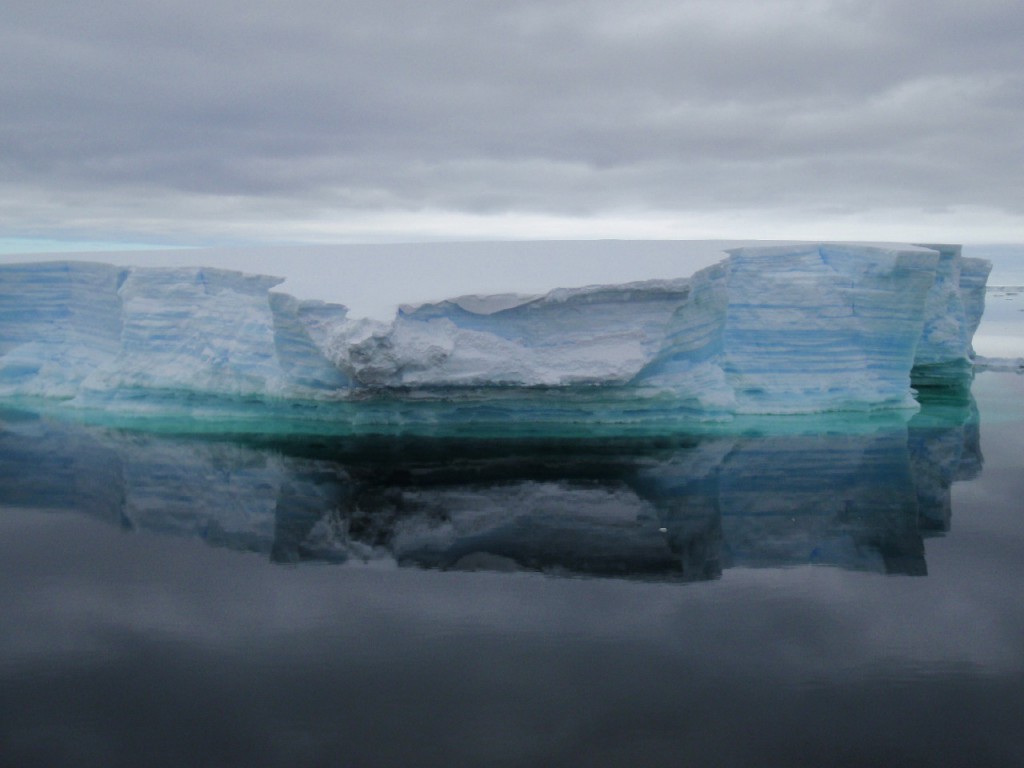New research sheds light on history of polar current
Research conducted by a team that included scientists from British Antarctic Survey reveals the ocean current moving around the South Pole flowed at much the same speed in the last ice age as it has done in much more recent times. The study suggests there was unlikely to have been very strong changes in the wind speed either. The findings will help scientists model past climates with greater accuracy.
Writing in Nature Geoscience the scientists describe how they reached their conclusions after analysing cores of sediment taken from the seabed. Sediment builds up as seawater drops its burden of particles — dust and other debris carried into the sea by wind and erosion of the continents. Strong winds can create strong currents that are capable of carrying larger particles than the weaker currents created by weaker winds.

Thus, the particle sizes of sediment obtained by taking samples of the mud at different depths in the sea bed can provide an indication of prevailing current speed, and in some cases the driving wind speed, at the time the sediment was laid down. However, this happens only where the current driven by the wind reaches all the way to the seabed and there are not many areas of the world where this occurs in the deep sea.
The team, led by Professor Nick McCave of Cambridge University, show that, in the case of the current that circles Antarctica, known as the Antarctic Circumpolar Current (ACC), flow speeds appear to have changed only slightly between the present climate state and the last major glacial episode — the most recent ice age. This surprising finding emerges from a comparison of particle sizes of sediment from the two different periods.
The size of particles obtained from sediments laid down in the sea between South America and Antarctica during the Holocene (last 10,000 years) differed surprisingly little from those of sediments deposited in the last ice age (18-30,000 years ago). The results of this comparison suggest that wind speeds may not have greatly altered in this climatologically important part of the ocean, a finding that will prove valuable in developing more accurate models of past climates.
The seawater that covers most of the Earth’s surface plays a key role in its climate. Oceans act as giant heat reservoirs, absorbing and releasing heat. Water movement known as ‘meridional overturning circulation’ occurs when water moves from the warmer tropics to the cold poles where it changes its depth and returns in continuous looping flows. The chief driving forces behind this circulation are twofold: wind and water density differences. The density effects are caused by both temperature and salinity contrasts between water masses. Cold, salty water is heavier than warmer, less salty water: the former sinks and the latter rises with the Southern Ocean acting as a mixing ‘hot spot’ in global circulation.
The ACC is driven by both winds and density forces. The biggest current in the world ocean, it has a flow estimated to be equivalent to 640 Amazons and reaches the seabed at 4,000 m depth.
Professor Mike Meredith, of BAS and the Scottish Association of Marine Science explained: “The Antarctic Circumpolar Current is the biggest current system in the world, and plays a huge role in controlling planetary-scale climate.
“These new results show that its strength during the last ice age was surprisingly similar to more recent times with the exception of where more extensive sea ice blanketed the ocean.
“As well as helping us understand how much the winds that drive the current might have changed over thousands of years, this gives us new insight into how the current actually works and therefore how it might change in future” he added.
Samples taken from the cores were analysed at two points along their lengths, representing two distinct intervals in the history of the world’s climate. What emerged from the comparison was that there was only a slight difference in particle sizes between the ice age sediments and the more recent sediments, except where more extensive sea ice shielded the ocean during the last ice age.
This finding suggests that the currents moving around Antarctica in a time of extreme cold and large ice sheets (the last ice age) and a warmer era of smaller polar ice sheets (like today) were much the same in speed. This in turn suggests that the winds driving the currents may have had similar strengths. The similarity in wind speeds confounds expectations of some scientists who had supposed that significantly faster wind speeds had been common during the ice age.
The research has important implications for understanding the climate record obtained from cores taken from the great Antarctic ice sheets. These cores show that during ice ages more dust was blown from places such as South America than during interglacials (the warmer period between ice ages). The study suggests that it may not have been stronger winds that were responsible for the greater accumulation of dust. Rather, the higher levels of dust found in ice may be explained by factors such as a more extensive exposure of continental shelf, discharge from South American glaciers, and the presence of drier, less vegetated soil.
Work of this kind makes a valuable contribution to building computer models of the behaviour of the climate system, allowing for some key variables to be more confidently established.
The research was funded by the Leverhulme Trust for laboratory work and the British Antarctic Survey (Cambridge, UK) and the Alfred Wegener Institute (Bremerhaven, Germany) whose ships obtained the sediment cores.
The paper “Minimal change in Antarctic Circumpolar Current flow speed between the last glacial and Holocene” by I.N. Cave, S.J. Crowhurst, G. Kuhn, C-D Hillenbrand and M.P. Meredith is published on Nature Geoscience’s website: http://dx.doi.org/10.1038/ngeo2037.
